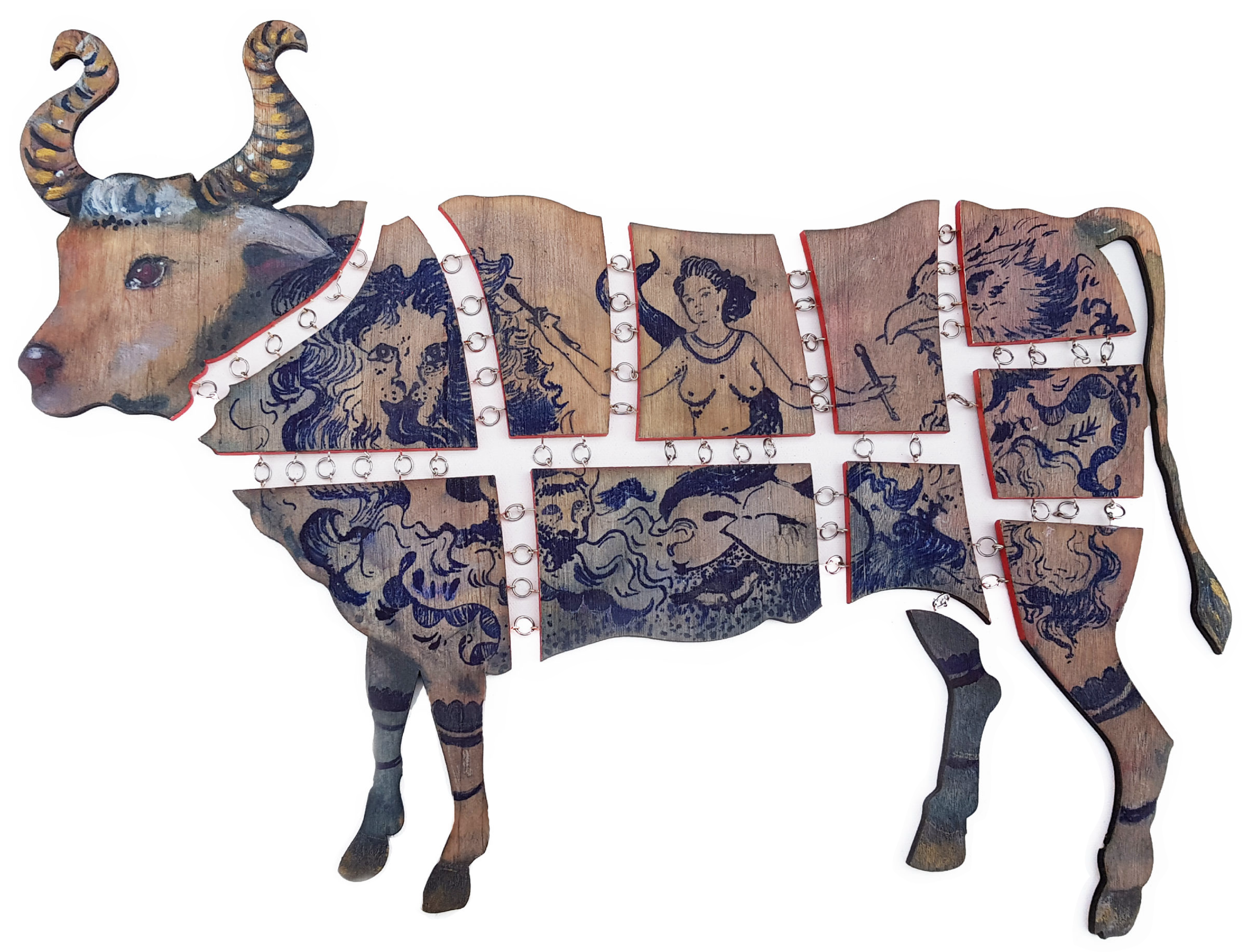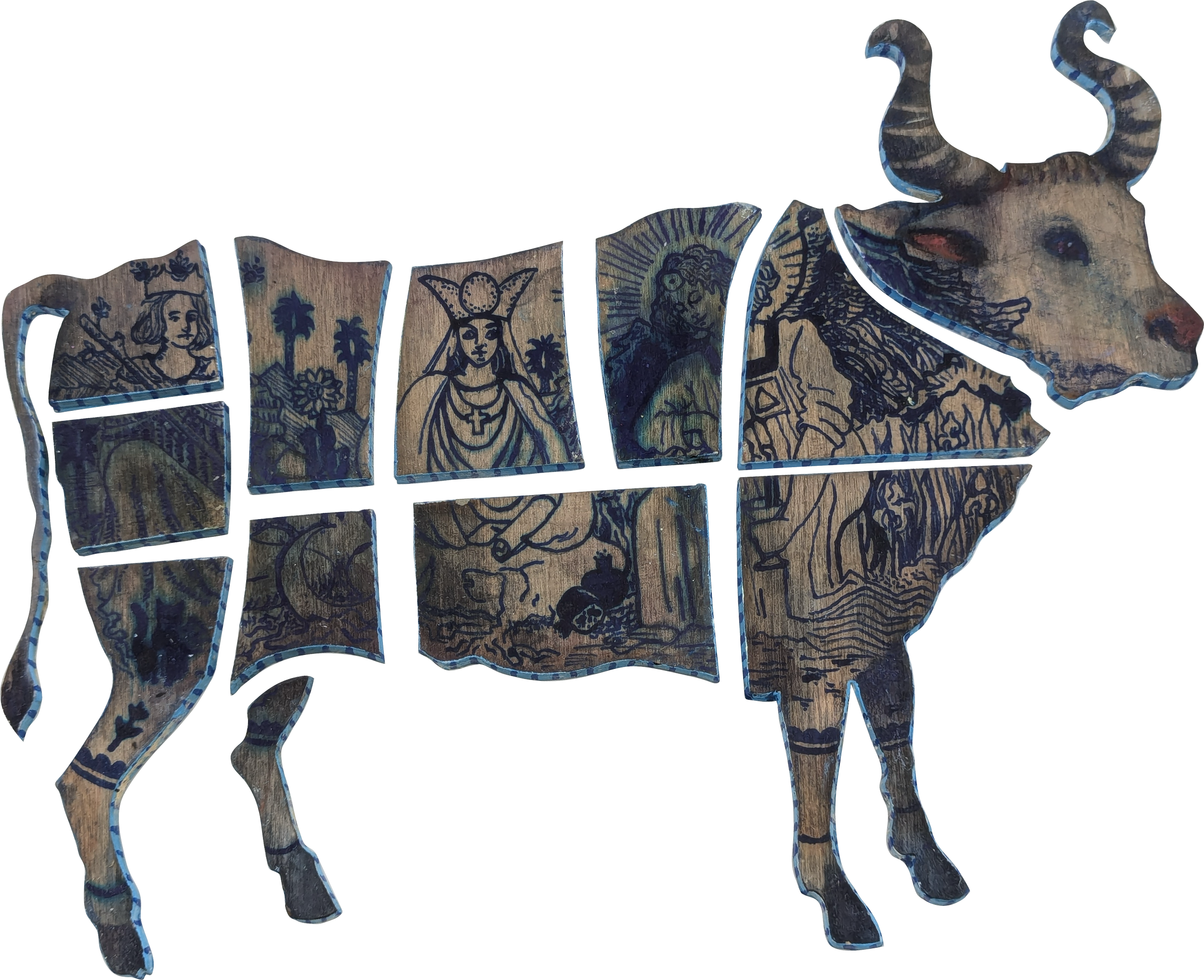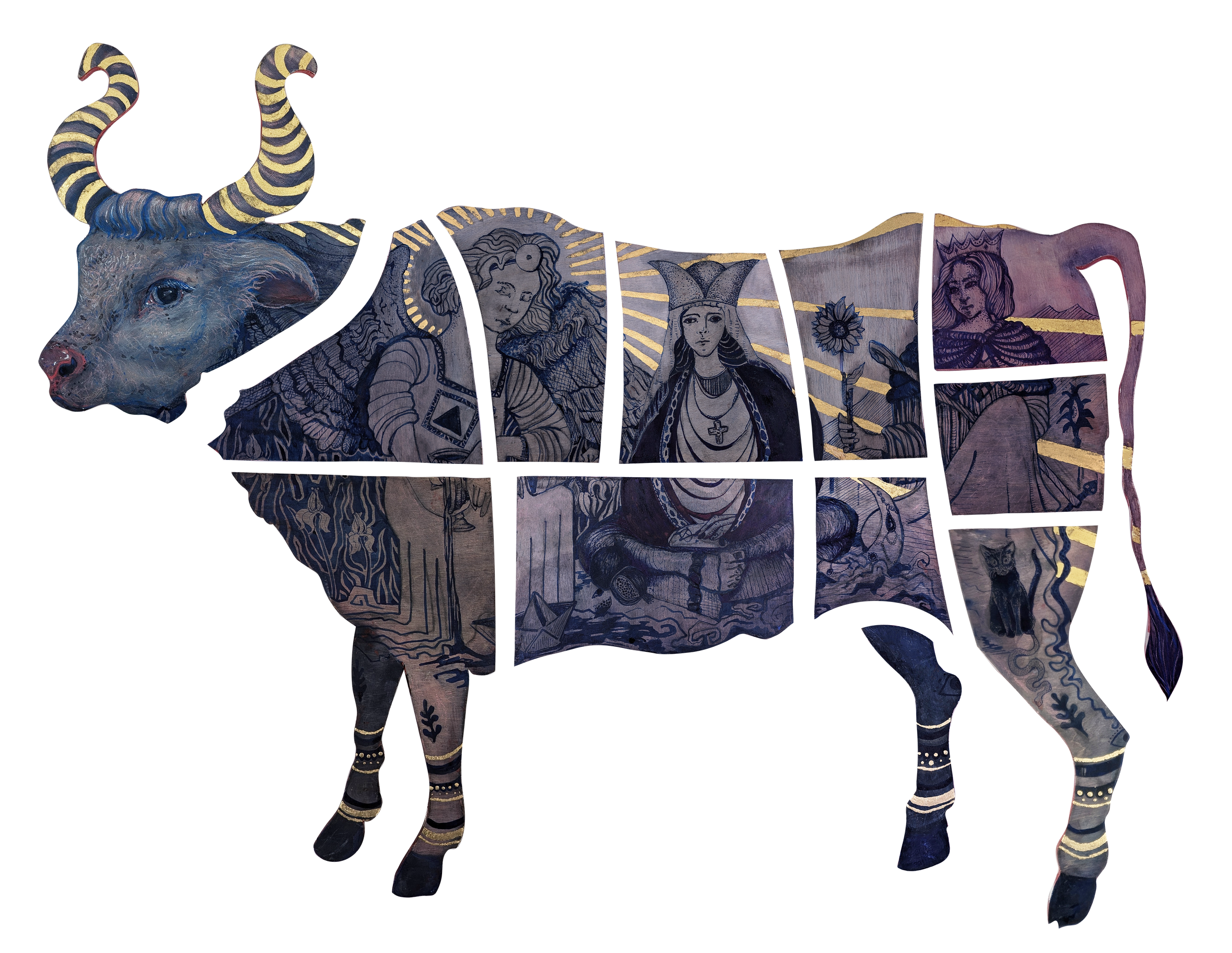What does it mean to consume the culture we worship? Inspired by the Sacred Bull circus act of the Ringling Bros., this collection reimagines the cow as both a symbol of reverence and a fractured commodity. These works delve into the tension between spirituality and commodification, challenging us to consider how something meant to be whole can be divided, consumed, and sold. Through intricate symbolism, they also explore the burdens placed on femininity, questioning how cultural and gendered ideals are preserved, exploited, and redefined.
The World 2020
Mixed Media on Wood Panel
12”x18”
Inspired by the Ringling Brothers' "Sacred Bull" circus act, this piece critiques the commodification of cultural symbols and the appropriation of what is deemed exotic. The cow, adorned with imagery from The World tarot card, a symbol of unity and interconnectedness, is divided into butchered cuts of beef. This fragmentation represents how aspects of cultures are extracted, stripped of their original meaning, and sold for profit. By juxtaposing the sacred with the commercial, the work reflects on the effects of globalization, where cultural identities are fragmented and reshaped to fit consumer narratives. It invites viewers to question the ethics of cultural appropriation and the costs of turning what is sacred into a commodity.
The Calf,2022
Mixed Media on Wood Panel
4”x6”
To be a Woman,2024
Mixed Media and gold-leaf on Wood Panel
40”x60"
This piece draws from a deep well of symbolism, reflecting on societal ideals of femininity through the sacred image of the cow, revered in Hinduism for her nurturing role as she provides milk, nourishing humanity as her own. However, the sacred imagery of Temperance, the High Priestess, and the Queen of Wands is deliberately placed on the form of a bull, leaning into the troubling reality that even post-fourth-wave feminism, women's voices often go unheard unless a man carries their message. This stark contrast underscores the lingering inequality in a world that claims gender equality but continues to value male advocacy as more authoritative.
The three tarot figures each embody societal lessons about what it means to be a "good woman." Temperance represents stability, demureness, and the selfless ability to endlessly support others, symbolizing the heart of the family. The High Priestess reflects perfection, faithfulness, and submissiveness, existing as an ideal of passive acceptance. The Queen of Wands, positioned at the bull's rump, captures the relentless "girlboss" hustle, illustrating the expectation that women must juggle ambition, grace, and power effortlessly to achieve success.
By situating these feminine ideals on the body of a bull, the piece critiques how society continues to rely on male figures to amplify women's struggles, raising questions about whose voices are truly heard and valued. The work asks viewers to confront the disappointing persistence of gender inequality and challenges them to imagine a world where women’s narratives can stand powerfully on their own.
Through these works, the collection invites us to reflect on the ways we divide, consume, and redefine what we hold sacred—whether it is culture, identity, or spirituality. By drawing from rich symbolism and challenging societal norms, these pieces reveal the fractures created by commodification and appropriation, while also highlighting the resilience of the ideals they depict. In examining these tensions, the collection asks us to reconsider our own roles in shaping and preserving what is truly valuable, leaving us with a poignant question: how can we honour what we choose to consume?





